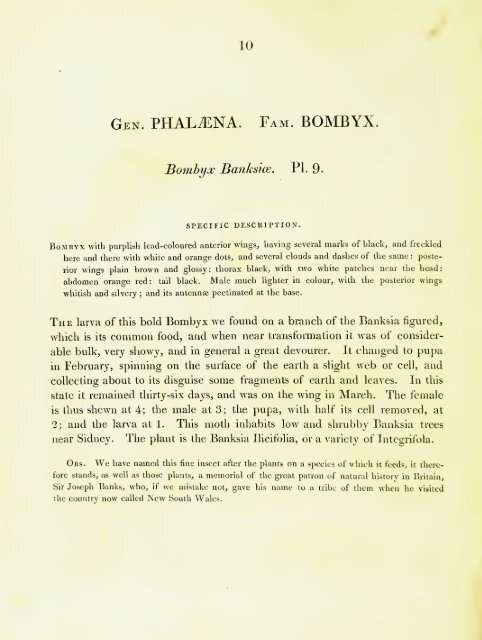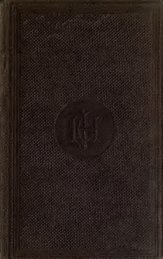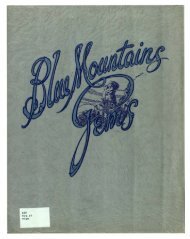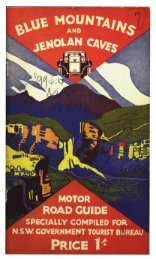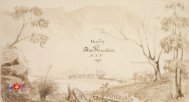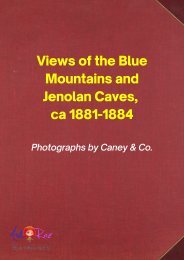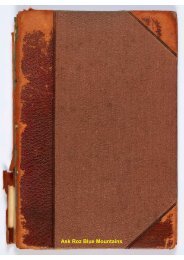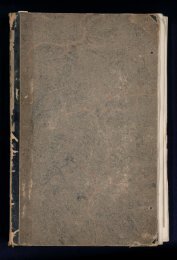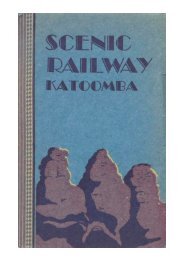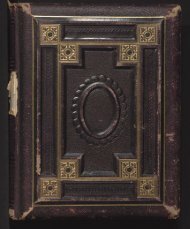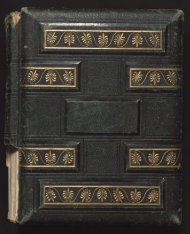A Natural History of Lepidopterous of NSW by John William Lewin
A Natural History of Lepidopterous of NSW by John William Lewin COLLECTED, ENGRAVED, AND FAITHFULLY PAINTED AFTER NATURE JOHN WILLIAM LEWIN, A.L.S. LATE OF PARAMATTA, NEW SOUTH WALES
A Natural History of Lepidopterous of NSW by John William Lewin
COLLECTED, ENGRAVED, AND FAITHFULLY PAINTED AFTER NATURE
JOHN WILLIAM LEWIN, A.L.S. LATE OF PARAMATTA, NEW SOUTH WALES
You also want an ePaper? Increase the reach of your titles
YUMPU automatically turns print PDFs into web optimized ePapers that Google loves.
10<br />
Gen. PHALiENA.<br />
Fam. BOMBYX.<br />
Bom<strong>by</strong>x Banhstce. PI. 9.<br />
SPECIFIC DESCRIPTION.<br />
Bom<strong>by</strong>x with purplish lead-coloured anterior wings, having several marks <strong>of</strong> black, and freckled<br />
here and there with white and orange dots, and several clouds and dashes <strong>of</strong> the same<br />
:<br />
posterior<br />
wings plain brown and glossy: thorax black, with two white patches near the head:<br />
abdomen orange red: tail black. Male much lighter in colour, with the posterior wings<br />
whitish and silvery ; and its antennae pectinated at the base.<br />
The larva <strong>of</strong> this bold Bom<strong>by</strong>x we found on a branch <strong>of</strong> the Banksia figured,<br />
which is its common food, and when near transformation it was <strong>of</strong> considerable<br />
bulk, very showy, and in general a great devourer. It changed to pupa<br />
in February, spinning on the surface <strong>of</strong> the earth a slight web or cell, and<br />
collecting about to its disguise some fragments <strong>of</strong> earth and leaves. In this<br />
state it remained thirty-six days, and was on the wing in March. The female<br />
is thus shewn at 4; the male at 3; the pupa, with half its cell removed, at<br />
2; and the larva at 1. This moth inhabits low and shrub<strong>by</strong> Banksia trees<br />
near Sidney. The plant is the Banksia Ilicifolia, or a variety <strong>of</strong> Integrifola.<br />
Obs. We have named this fine insect after the plants on a species <strong>of</strong> which it feeds, it therefore<br />
stands, as well as those plants, a memorial <strong>of</strong> the great patron <strong>of</strong> natural history in Britain,<br />
Sir Joseph Banks, who, if we mistake not, gave his name to a tribe <strong>of</strong> them when he visited<br />
the country now called New South Wales.


